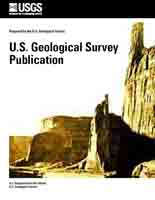Researchers routinely deploy oceanographic equipment in estuaries, coastal nearshore environments, and shelf settings. These deployments usually include tripod-mounted instruments to measure a suite of physical parameters such as currents, waves, and pressure. Instruments such as the RD Instruments Acoustic Doppler Current Profiler (ADCP(tm)), the Sontek Argonaut, and the Nortek Aquadopp(tm) Profiler (AP) can measure these parameters. The data from these instruments must be processed using proprietary software unique to each instrument to convert measurements to real physical values. These processed files are then available for dissemination and scientific evaluation. For example, the proprietary processing program used to process data from the RD Instruments ADCP for wave information is called WavesMon. Depending on the length of the deployment, WavesMon will typically produce thousands of processed data files. These files are difficult to archive and further analysis of the data becomes cumbersome. More imperative is that these files alone do not include sufficient information pertinent to that deployment (metadata), which could hinder future scientific interpretation. This open-file report describes a toolbox developed to compile, archive, and disseminate the processed wave measurement data from an RD Instruments ADCP, a Sontek Argonaut, or a Nortek AP. This toolbox will be referred to as the Wave Data Processing Toolbox. The Wave Data Processing Toolbox congregates the processed files output from the proprietary software into two NetCDF files: one file contains the statistics of the burst data and the other file contains the raw burst data (additional details described below). One important advantage of this toolbox is that it converts the data into NetCDF format. Data in NetCDF format is easy to disseminate, is portable to any computer platform, and is viewable with public-domain freely-available software. Another important advantage is that a metadata structure is embedded with the data to document pertinent information regarding the deployment and the parameters used to process the data. Using this format ensures that the relevant information about how the data was collected and converted to physical units is maintained with the actual data. EPIC-standard variable names have been utilized where appropriate. These standards, developed by the NOAA Pacific Marine Environmental Laboratory (PMEL) (http://www.pmel.noaa.gov/epic/), provide a universal vernacular allowing researchers to share data without translation.


